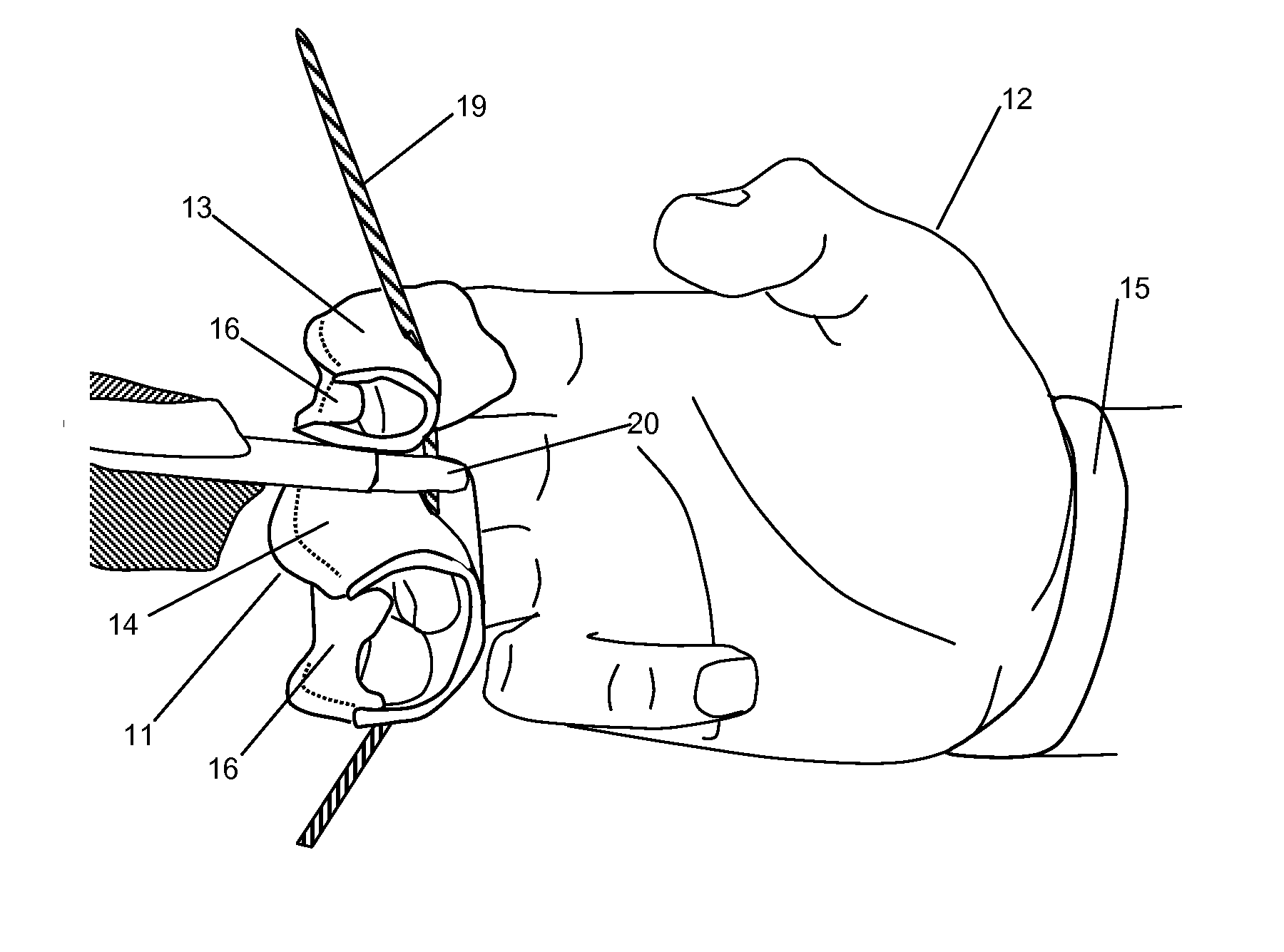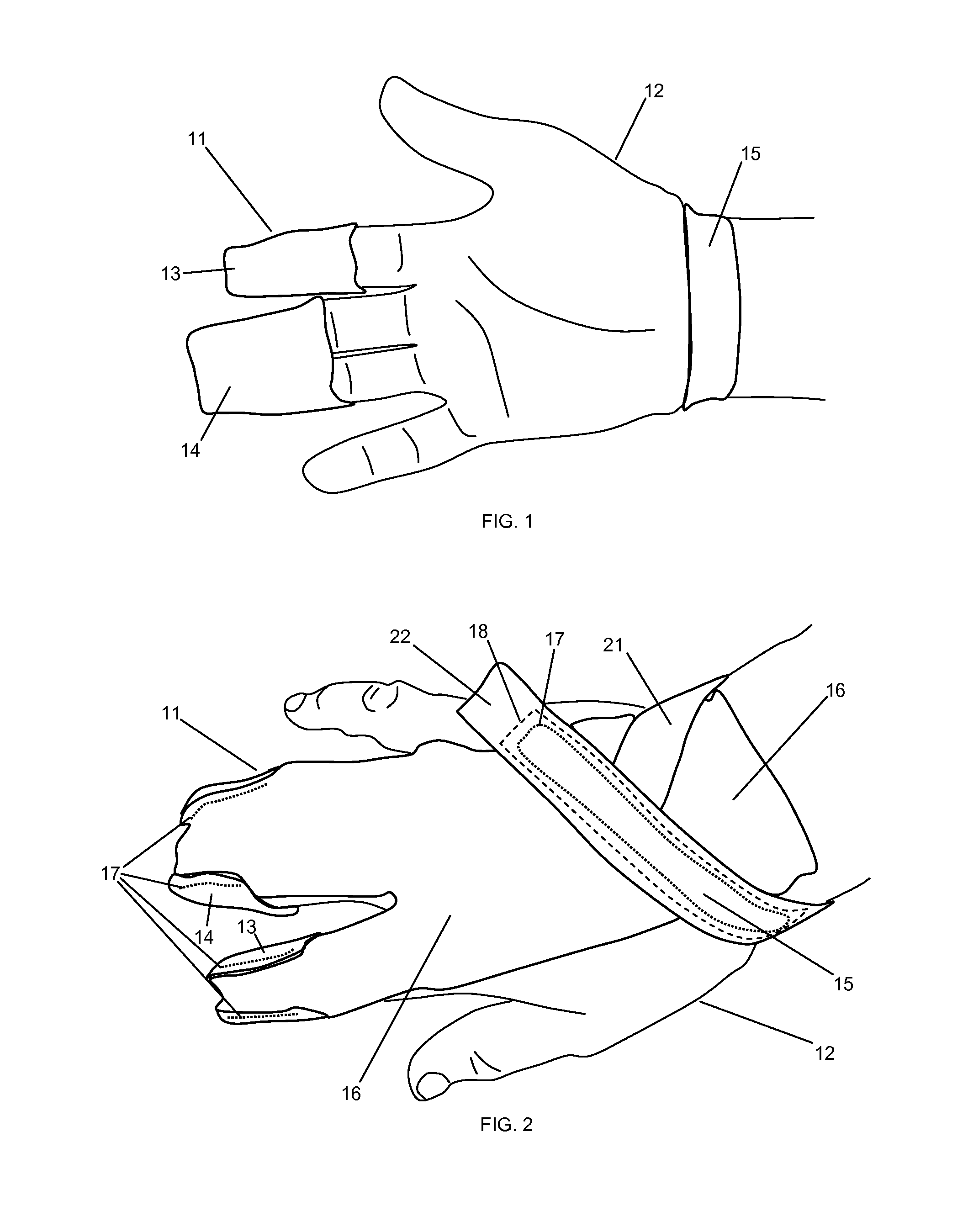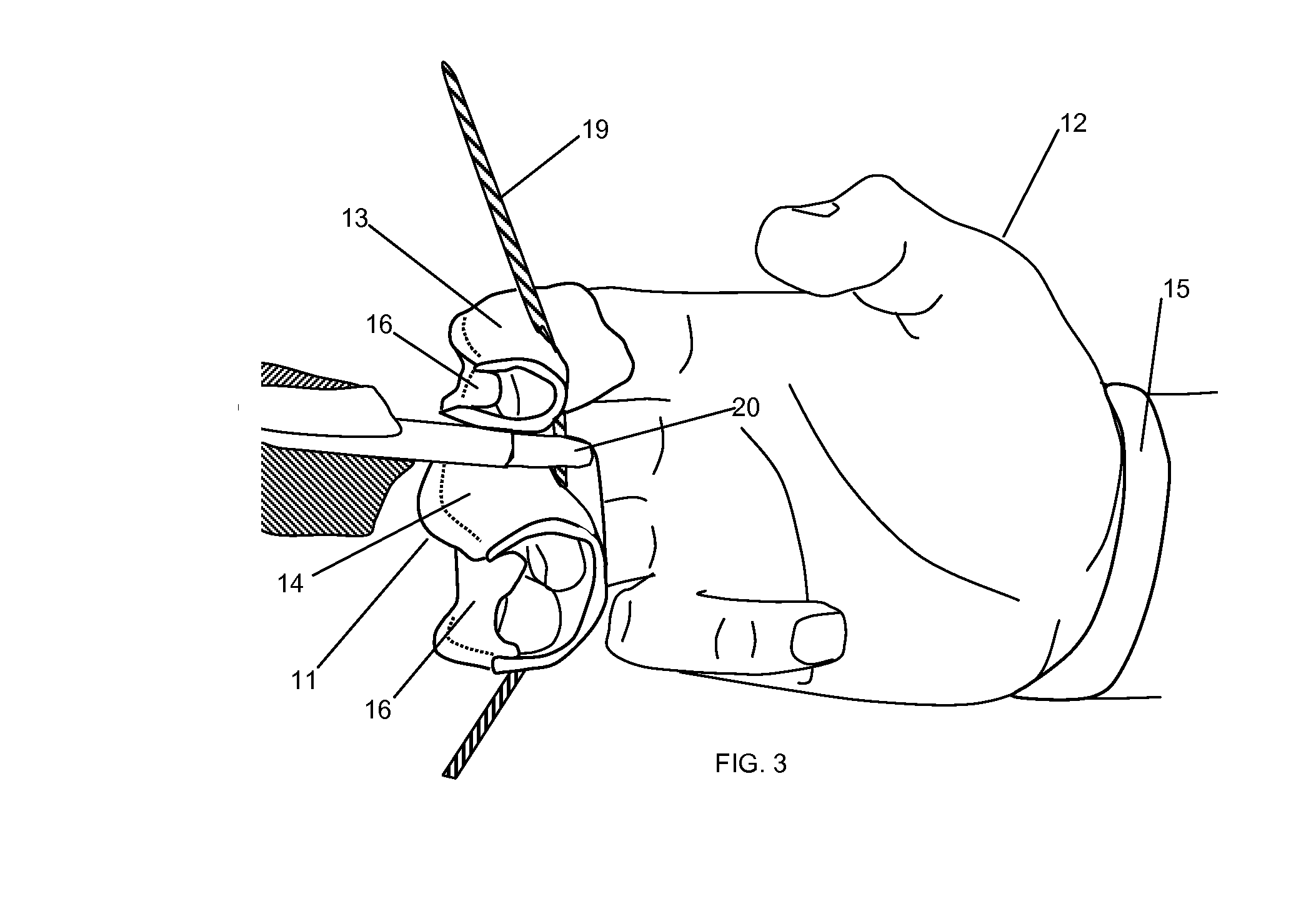Archer's finger protection device
a finger protection and archery technology, applied in the field of archery, can solve the problems of spoiling the release, affecting the release, and affecting the accuracy of the release, so as to reduce the overall width of the contiguous drawing fingers, reduce the pinch of the finger, and improve the accuracy and comfor
- Summary
- Abstract
- Description
- Claims
- Application Information
AI Technical Summary
Benefits of technology
Problems solved by technology
Method used
Image
Examples
Embodiment Construction
[0022]FIG. 1 shows a palm side view of a finger protection device constructed according to the invention, in an open-palm style of glove manufacture. The assembly 11 fits on the archer's hand 12, and secures in place with a wrist strap 15. The single finger stall 13 encloses the archer's index finger similarly to previous styles and designs of open palm archery glove. The combined finger stall 14 encloses both the middle and ring finger of the archer's hand. Other styles of glove construction may be used with the same invention. For example, a full-palm style glove, which some archers prefer, would offer the same benefits as the protoype shown in these drawings. Still other constructions, new or current, may incorporate the combined finger stall of this invention.
[0023]FIG. 2 shows a back-of-hand view of the device. Construction details are most visible in this figure. The finger stalls 13 and 14 are a thick, smooth-finished leather, stitched 17 to the glove back 16, which is a thin...
PUM
 Login to View More
Login to View More Abstract
Description
Claims
Application Information
 Login to View More
Login to View More - R&D
- Intellectual Property
- Life Sciences
- Materials
- Tech Scout
- Unparalleled Data Quality
- Higher Quality Content
- 60% Fewer Hallucinations
Browse by: Latest US Patents, China's latest patents, Technical Efficacy Thesaurus, Application Domain, Technology Topic, Popular Technical Reports.
© 2025 PatSnap. All rights reserved.Legal|Privacy policy|Modern Slavery Act Transparency Statement|Sitemap|About US| Contact US: help@patsnap.com



